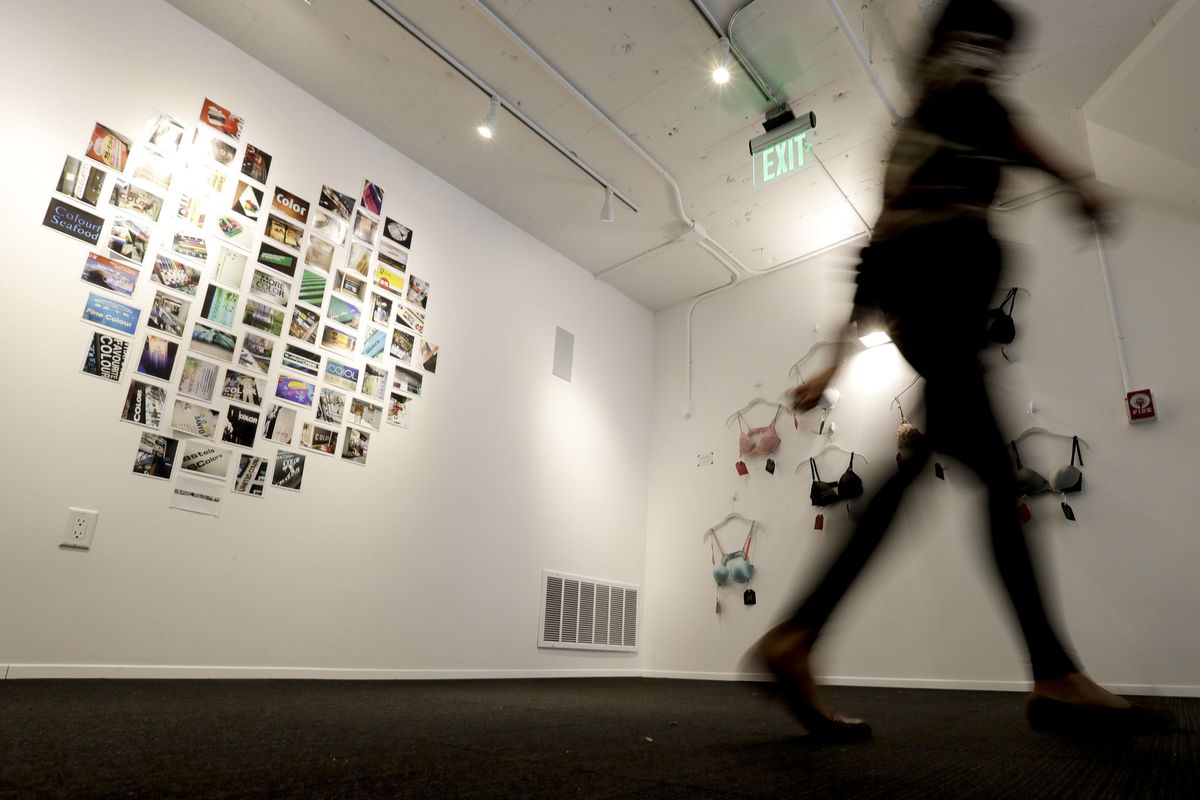Everyday items emit heartache at broken-relationships museum

LOS ANGELES – After her husband asked for a divorce, Amber Clisura gave back her engagement ring, kicked him out of the house and tossed everything that reminded her of the ruined marriage. Except for one item: a polished steel barbecue smoker that her future ex-husband had fashioned for her from an old oil drum.
“It sat there on the patio and rusted and rusted, and it became a sad symbol of the relationship,” Clisura said.
The four-legged smoker had been a treasured handmade gift, but eventually Clisura couldn’t bear to look at it. She considered giving it to a neighbor or selling it for scrap but then read about a call for submissions at the new Los Angeles branch of the Museum of Broken Relationships.
The original museum opened in Zagreb, Croatia, in 2010 after growing out of a touring collection that crisscrossed Europe, Asia and the U.S. On display in Zagreb are artifacts from failed unions, most of them mundane under ordinary circumstances. A single stiletto heel. A wine opener. A worn old Snoopy doll.
But when isolated in a glass case or hanging on a white wall and accompanied by a caption, the objects become imbued with heartache or regret. Or freedom.
In Los Angeles, there’s a blue chiffon top a woman wore to a cafe where her husband told her he was leaving. An envelope of leaves mailed from Canada to San Diego so a long-distance paramour could experience changing seasons in Southern California. A jar of pickles purchased for a first love who, the donor explained, “stopped texting before I could give it to him.”
After some deliberation, Clisura, a textile artist and fashion designer from LA, decided to donate the smoker and drove it to the museum’s warehouse.
“A woman met me downstairs, and as I was handing it over, I burst into tears,” Clisura said, laughing now. “It felt like a weight was lifted.” The museum representative offered to give her a hug.
Employees have embraced their share of brokenhearted donors eager for closure, said director Alexis Hyde at the museum’s location on Hollywood Boulevard, a thoroughfare that, she noted, has been called the “boulevard of broken dreams.”
Hyde has been known to brush away her own tears as she opens boxes containing donations.
“It’s cathartic the way a good, sad movie is cathartic,” she said. “On some level, you know this person’s moving on, and they’ve survived.”
Hyde pointed out not all the fizzled unions represented in the 3,500-square-foot museum were romantic. One donor had an irreparable relationship with her father. Another split from a church. A California woman who donated a Texas license plate said she separated from the Lone Star State.
“My broken relationship was with myself,” said Andree Vermeulen, whose donated items are the museum’s most talked about. The actress sent in a pair of breast implants she had removed after ending a toxic relationship with a man who made disparaging comments about her body.
Vermeulen, who lives in Los Angeles, said the implants “never felt right,” and since they’ve been out, she has “reached a place where I feel very grounded and confident.” An outpouring of support on social media gave her further confidence to use the experience as fodder during storytelling performances in which she discusses body image and standards of beauty.
Vermeulen said the donation, now displayed in a glass case in the LA museum’s main room, symbolized the final chapter of the relationship, and her scars “mark a story and a time in my life that taught me a lot about myself.”
More than 2,000 items comprise the museum’s two brick-and-mortar collections and touring shows, which have made stops in San Francisco, Helsinki, Finland and Hamburg, Germany. A show in Seoul, South Korea, featured a donated Jeep that had to be taken apart and brought in by crane. Donations arrive so regularly that the LA site hopes to continually cycle in new items to keep the exhibit fresh.
Donors are anonymous or identified only by first name. They generally write just a few sentences as a backstory, but some items, including a simple green coffee mug at the LA site, come with explanations that go on for hundreds of words.
The caption accompanying a group of old cassette tapes reads: “The music made me dream.”
Pieces are displayed across six exhibition rooms in the ground-floor location that lures tourists who stroll Hollywood Boulevard. Visitors pay $18 admission and are encouraged to pop into a private “confessional,” where they can write about their own breakups.
Olinka Vistica and Drazen Grubisic, the Croatian artists who conceived the original exhibition on a whim, are shocked by its staying power.
Hyde isn’t. “It’s so resonant,” she said. “The audience is so large for it.”